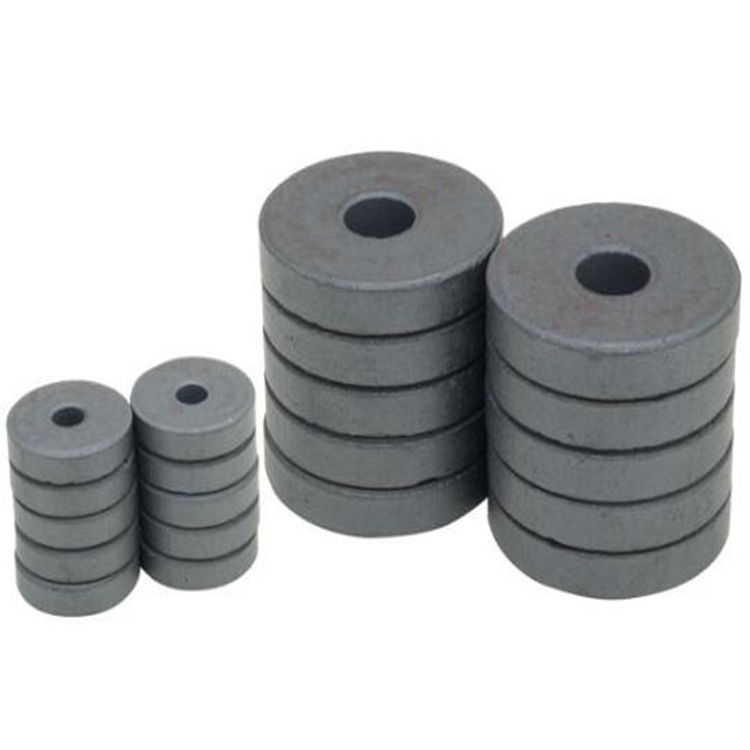
How are ferrite magnets made?
Ferrite magnets, sometimes referred to as ceramics because of their production process, are the cheapest type of permanent magnet material. The material became commercially available in the mid-1950s and has since found its way into countless applications, including curved magnets for electric motors, magnetic chucks and magnetic tools. The raw material for these magnets is iron oxide mixed with strontium or barium and ground into a fine powder. The powder is then mixed with a ceramic binder to produce magnets through compression or extrusion techniques, followed by a sintering process. The nature of the manufacturing process results in products that often contain defects such as cracks, voids, chips, etc. Fortunately, these defects rarely affect the performance of the magnet.

To improve the performance of ferrite magnets, the ferrite compound may be affected by a magnetic field during the pressing process. This bias induces a preferred magnetization orientation in the magnet, significantly degrading its performance in any other orientation. Therefore, ferrite magnets are available in both directional (anisotropic) and non-directional (isotropic) grades. Due to its lower magnetic properties, isotropic grades of ferrite are typically used where complex magnetization patterns are required and biasing in the process would be cost-prohibitive.
Ferrite magnets are prone to demagnetization when exposed to extreme temperatures, they are the least thermally stable of all magnetic families, but they can be used in environments up to 300°C (570°F). Some grades have better high and low temperature resistance, but there are several factors that will determine the performance of a neodymium magnet. Magnetic geometries using backplates, yokes, or return path structures will respond better to temperature changes. As with most ceramics, ferrite magnets should not be heated or cooled more than 100°C per hour.
Ferrite magnets are very corrosion resistant and coatings can be applied for aesthetic reasons or to reduce the fine ferrite powder associated with ferrite magnets.
The ferrite magnet material is very hard and brittle, and the average Mohs hardness of the material is 7, which is not suitable for traditional machine tools and cutting tools. Diamond tools and some abrasives are the conventional methods of making this magnet alloy. Most magnetic materials are processed in the unmagnetized state. Once the fabrication and cleaning operations are complete, the magnets are magnetized to saturation.
Ferrite magnets are fairly easy to magnetize, requiring only a reasonable magnetizing field. They are often used with mild steel components, such as motor housings or backplates, and it is often necessary to magnetize a ferrite magnet mounted on/in that component.
Ferrite magnets are inherently brittle and are especially prone to cracking when the application involves shock or bending. Like all magnetic materials, ferrites should not be used as structural elements in designs.
Ferrite magnets are made by calcining a mixture of iron oxide and strontium carbonate to form metal oxides. A multi-stage milling operation reduces the calcined material to a small particle size. It is compacted in a mold by one of two methods. powder. In the first method, powders are dry compacted to form isotropic magnets with weaker magnetic properties but better dimensional tolerances. Normally, dry pressed magnets do not require fine grinding. In the second method, the powder is mixed with water to form a slurry. In the presence of a magnetic field, the slurry is compacted in the mold. An applied magnetic field produces an anisotropic magnet that exhibits excellent magnetic properties but usually requires finish grinding.
The compacted part, which is close to the finished geometry, is sintered at high temperature to achieve the final fusion of individual particles, and the final shaping is achieved by diamond abrasives. Typically, the pole faces of ferrite magnets are ground and the remaining surfaces take on "as-sintered" tolerances and physical properties.
